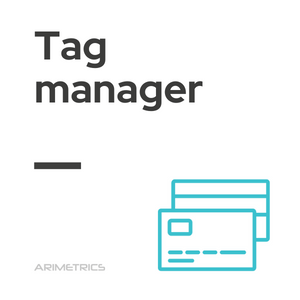
A tag manager is a tool with the ability to manage user-generated tags (also known as categories, taxonomies or tags) within a collaboration software. Tag management features and processes are put in place to encourage consistency, navigation efficiency, and compliance with an existing taxonomy.
In web analytics, one of the most widely used tag managers is Google Tag Manager, a tag management system created by Google to manage JavaScript and HTML tags used among other things for website tracking and analysis. Also noteworthy are Tealium, Dynamic Tag Manager (from Adobe), Piwik Pro Tag Manager and Matomo Tag Manager.
Functionalities of tag managers
A tag management system is designed to help manage the lifecycle of e-marketing tags (sometimes known as tracking pixels or visitor counters), which are used to integrate third-party software into digital properties.
Many businesses rely on multiple third-party solutions to add functionality to websites, video content, and mobile apps. Examples of such solutions include web analytics, campaign analysis, audience measurement, personalization, A/B testing, retargeting and conversion tracking.
Integration typically takes shape by adding a snippet of JavaScript code into the content. At the most basic level, this poses maintenance, quality control and some performance challenges.
In addition, since tags are the mechanism for implementing external solutions and sharing data with them, tag management also encompasses aspects such as data management, privacy, interoperability, governance and analytics processes.
Benefits of using label managers
- Agility: Tag managers allow business users to operate more independently of technical resources and the IT department, giving them greater agility.
- Performance: Helps reduce page load time through asynchronous tag loading, conditional code loading and timeout tag functionality.
- Cost savings: They allow duplication of the labels used for commission attribution, which can result in significant savings.
- Data control: They offer the ability to manage data leakage to third parties and ensure compliance with data protection regulations, such as cookie consent and user de-identification.
